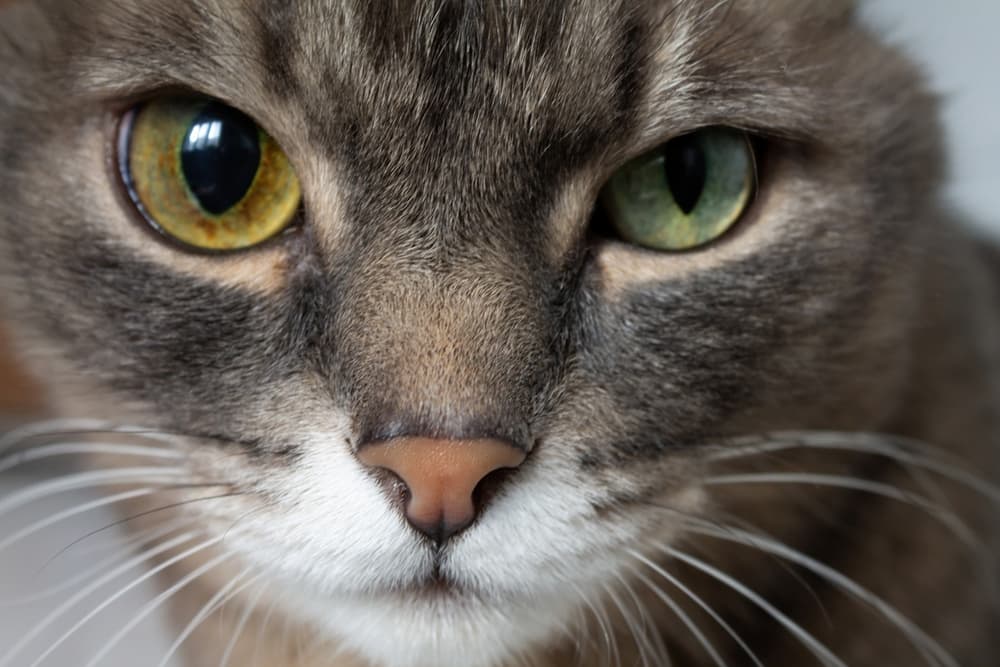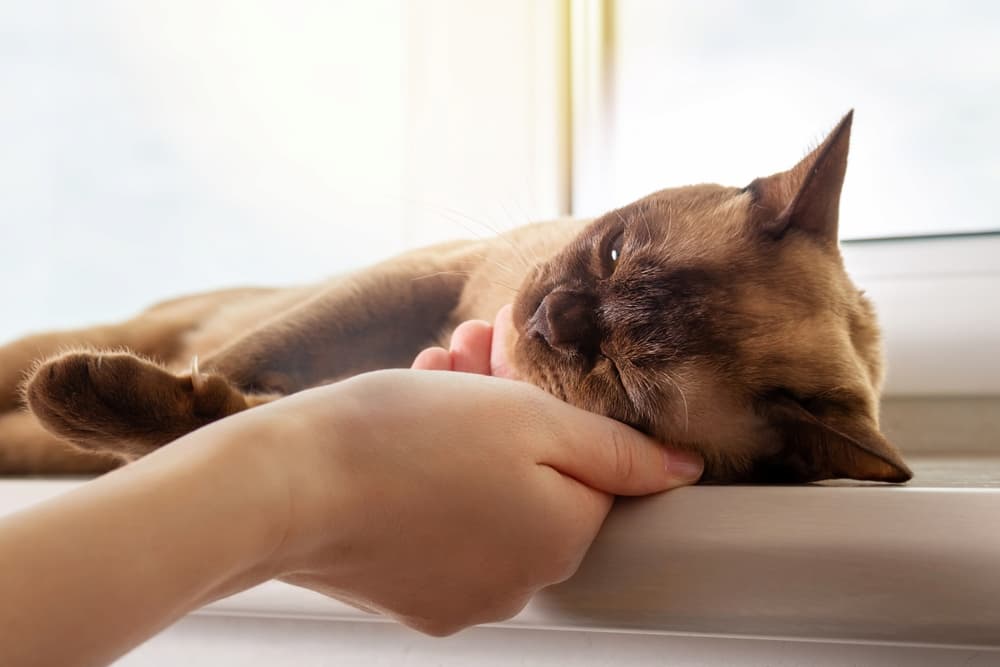Glaucoma in Cats

Overview
You may be familiar with glaucoma in humans, but did you realize that cats can also develop glaucoma? Although this condition is relatively uncommon, it can have significant impacts on the life of affected cats. Read on to learn more about how we diagnose and treat this condition in our feline friends.
What is Glaucoma in Cats?
Glaucoma is a disease in which the intraocular pressure (IOP), or pressure within the eye, is abnormally high. This occurs when fluid in the eye, known as aqueous humor, is unable to drain effectively. The eye is constantly producing aqueous humor; if it cannot drain, the pressure in the eye will increase like a water balloon that is being overfilled. The buildup of fluid in the eye itself can put pressure on the optic nerve, which connects the eye to the brain.
Fortunately, glaucoma is relatively rare in cats. Siamese and Burmese cats are predisposed to this condition, however, and therefore are more likely to develop glaucoma.
Glaucoma should not be confused with cataracts. Cataracts are caused by changes within the lens of the eye, while glaucoma is caused by increased quantities of the fluid that surrounds the lens. While both conditions can cause blindness in cats, they are separate diseases.
Glaucoma in Cats Symptoms

Glaucoma can affect one or both eyes. Clinical signs may vary, depending on the severity of the condition. Without effective treatment (and sometimes despite effective treatment), glaucoma in cats will progress and symptoms may become more pronounced over time.
Signs of early stage glaucoma in cats can include:
- Redness of the eye(s)
- Squinting
- Pawing at the eye(s) or other signs of discomfort
- Cloudiness (of the surface of the eye) due to inflammation
As glaucoma progresses, the pressure build up on the optic nerve can lead to blindness. In severe cases, the eye(s) may be visibly enlarged and bulge from the eye socket.
What Causes Glaucoma in Cats?

Glaucoma in cats can be divided into two broad categories: primary glaucoma and secondary glaucoma.
Primary glaucoma is caused by an anatomical defect of the eye that blocks fluid drainage within the eye. This form of glaucoma is relatively uncommon in cats. It primarily affects Siamese and Burmese cats, though it has been uncommonly reported in other breeds, including Russian Blue and Domestic Shorthair cats.
Secondary glaucoma, in contrast, occurs secondary to another condition. Most cases of feline glaucoma are secondary to another disorder of the eye that interferes with fluid drainage. Potential triggers of secondary glaucoma include eye inflammation, head trauma, tumors within the eye, damage to the lens, luxation (displacement) of the lens, and other conditions.
Diagnosing Glaucoma in Cats

Your veterinarian will use a tool called a tonometer to measure your cat’s IOP (eye pressure). In most cases, this test can be done without anesthesia or sedation. Your veterinarian will administer numbing eye drops, then touch the tonometer to the surface of the eye. You may be familiar with these procedures from your own optometry appointments.
In addition to assessing your cat’s IOP, your veterinarian will perform a thorough physical examination. Your veterinarian will also perform an ophthalmic examination, looking for other ocular conditions that may be associated with your cat’s glaucoma.
Cat Glaucoma Treatment
Glaucoma in cats requires treatment, for a number of reasons. First, this condition is painful for a cat with glaucoma. Treating your cat’s glaucoma is essential, in order to keep your cat comfortable and maintain their quality of life. Additionally, untreated glaucoma will progress, causing damage within the eye and leading to blindness. This blindness is usually permanent, once it occurs.
Glaucoma is often managed with eye drops, such as dorzolamide and timolol. These drops slow the production of aqueous humor and/or promote the drainage of aqueous humor. Your veterinarian may also prescribe medications to treat an underlying eye disease contributing to your cat’s glaucoma. It is important to give all medications consistently, as directed by your veterinarian.
If your cat’s glaucoma does not respond to medical treatment, your veterinarian may recommend surgery. Rarely, surgery may be attempted to restore drainage of aqueous humor in an effort to preserve your cat’s vision. In most cases, however, surgical treatment involves enucleation or removal of the eye. If your cat’s eye is causing pain and has already lost vision, removing the eye may be the most humane option for your cat.
Managing Glaucoma in Cats

Cats with glaucoma will typically remain on medication for the rest of their lives. Therefore, it’s helpful to make medication time as pleasant and low-stress as possible. Experiment with different locations for medication administration—are you and your cat more comfortable with your cat on the floor, on a countertop, or even sitting in your lap? Give your cat lots of affection before administering eye drops, and follow eye drops with a tasty treat to create a positive association.
If your cat becomes blind due to glaucoma, they will likely adapt surprisingly quickly to their loss of vision. You can help your cat acclimate by not rearranging furniture or other items within your home, so they can learn their way around your home without sight. Within a few weeks, most cats are getting around so well that they may not even realize they are blind. For more information on coping with feline blindness, see our Guide to Life with a Blind Cat.
How to Prevent Glaucoma in Cats

There’s no surefire way to prevent glaucoma in cats. However, there are ways you can decrease your cat’s risk.
Ensure that your cat receives regular veterinary care. Siamese and Burmese cats, in particular, should receive regular eye exams. Early diagnosis and treatment of glaucoma will maximize your cat’s wellbeing and minimize their risk of blindness.
If your cat is showing signs of an eye issue, have them seen by your veterinarian as soon as possible. Even if their ocular issues don’t indicate glaucoma, many eye conditions can cause glaucoma if they are left untreated. Early diagnosis and treatment of eye issues can play a key role in preserving your cat’s vision.
Finally, minimize your cat’s risk of secondary glaucoma by reducing their risk of eye disease or injury. Keeping your cat indoors will not only reduce their risk of trauma, it can also reduce the risk of infectious and inflammatory diseases that may contribute to glaucoma.









